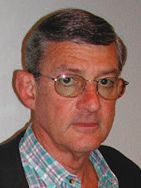MWFS & VOC: Today & Tomorrow
Dr. Robert M. Gresham, Contributing Editor | TLT Lubrication Fundamentals May 2012
SCAQMD and ILMA host joint symposium on Rule 1144 specifications and VOC regulations in MWFs.
KEY CONCEPTS
•
Several MWF industry representatives gathered in March for a joint symposium organized by The South Coast Air Quality Management District and ILMA and co-sponsored by STLE.
•
Adopted Jan. 1, Rule 1144 regulates specific emissions in the MWF community.
•
Partnering with ILMA, SCAQMD developed a test method for measuring VOCs and reducing emissions in the MWF industry.
STLE WAS PLEASED TO CO-SPONSOR A JOINT SYMPOSIUM IN MARCH organized by The South Coast Air Quality Management District (SCAQMD) and ILMA. The event focused on the new Rule 1144 (Metalworking Fluids and Direct-Contact Lubricants) affecting volatile organic component (VOC) regulations in MWFs.
SCAQMD, responsible for Orange, Los Angeles, Riverside and San Bernardino Counties in Southern California, is a U.S. key agency whose actions impact the nation and other parts of the world.
Southern California is an exceptional region in that it has a large, dense and growing human, industrial and vehicular population, coupled with a unique geography that exacerbates the propensity for air pollution. The region consists of 10,000 square miles with 16.5 million people and 10 million vehicles where air is trapped between prevailing easterly ocean breezes from the west and a high mountain range to the east. The region is also home to the largest manufacturing site in the U.S. With these challenges, SCAQMD has been a vanguard agency in helping EPA promulgate regulation regarding emissions from a wide variety of sources such as vehicles, paints and coatings and now—the MWF industry.
Historically, much of U.S. air regulation has begun in Southern California and moved, not only to the rest of the country but other parts of the globe. Long-term, SCAQMD’s story is one of success. Despite the region’s incredible growth since 1950, peak ozone levels have dropped from .68 ppm in 1950 to present-day levels of .18 ppm.
Since Jan. 1, Rule 1144 regulates specific emissions in the MWF community, a rather large entity with 12,000 commercial machine shops and in-house machining for many large manufacturers. Some 4.2 million gallons of MWF were sold into the region in 2007.
ASTM E-1868-10 TEST METHOD
Due to a lack of adequate test methods, it was not possible to even know for certain the levels of VOCs in these fluids beyond general knowledge of their formulations. SCAQMD set out to (1.) establish a test method for measuring VOCs, (2.) reduce emissions in the MWF industry while minimizing the competitive impact on small machine shops and (3.) prohibit the sale of non-compliant fluids in the region.
To do this, SCAQMD assembled 200 stakeholders and formed a committee to develop a test method to create a “Smart” Rule that would reach a common goal of managing specific emissions in the MWF industry. ILMA was the key trade association partnering in this effort.
STLE Fellow and CMFS-certified John Burke, Houghton International Inc., and CMFS Committee member Mike Pearce, Dodge Oil, were key members of ILMA’s team. They worked with SCAQMD lab people and doubtless many others to develop the test method, ASTM E-1868-10 for measuring VOCs in MWFs. With a test method in hand, it was possible to develop needed VOC information on existing products, set reasonable regulatory limits, reporting and labeling requirements.
The manifold purpose of this symposium was to:
1.
Communicate various aspects of Rule 1144 and the background for its development.
2.
Describe the logic and methodology behind ASTM E-1868-10 test method development and specific modifications unique to the SCAQMD.
3.
Showcase technologies and materials with potential to aid in compliance.
4.
Review some case histories in implementing Rule 1144 at end-users.
Among the conference’s events:
•
SCAQMD personnel Uyen-Uyen Vo and Mike Morris reviewed the Thermal Gravimetric •
Analysis (TGA) E-1868-10 test method development and provided an overview of Rule 1144 and reporting requirements.
•
Taminco’s Michael Gernon discussed theoretic reasons why TGA is the preferred technology for measurement.
•
John Burke, Houghton, analyzed the advantages and disadvantages of vegetable-based MWFs (veggie oils like canola have no VOCs but offer other problems to be managed).
Tyler Housel, Inolex Chemical Co., discussed VOC assessment in ester fluids.
•
Lubrizol’s Jennifer Ineman described new aqueous-based rust preventatives (I know it seems like an oxymoron, but it is real).
•
Tom Manzo, Timely Industries, described a little “out of the box” thinking and coupled with SCAQMD personnel for a variance until a unique solution for a unique product, prefinished steel door frames, could be developed. Would you believe an ancient product, Murphy’s Oil Soap, did the job?
•
Mike Pearce, Dodge Oil, discussed approaches and problems in reformulating to meet Rule 1144—as he put it the “Good, the Bad, and the Oh My!”
•
Mark Fretz, Houghton, and Paul Frederick, American Research Products, each described a number of case histories where successful compliance was achieved.
 Since 1950, peak ozone levels in the Southern California region have dropped from .68 ppm to present-day levels of .18 ppm. (Photo courtesy of SCAQMD)
Since 1950, peak ozone levels in the Southern California region have dropped from .68 ppm to present-day levels of .18 ppm. (Photo courtesy of SCAQMD)
The symposium met its goals, and STLE was pleased to be a co-sponsor. ILMA showed true industry leadership in working with SCAQMD during the last four years to develop the compliance program.
For more information, log on to
www.stle.org where you will find a copy of Rule 1144, examples of various VOC reports, the additional SCAQMD requirements for the E-1868- 10 test method and the conference proceedings, including bios and contact information for the presenters.
 Bob Gresham is STLE’s director of professional development. You can reach him at rgresham@stle.org
Bob Gresham is STLE’s director of professional development. You can reach him at rgresham@stle.org.